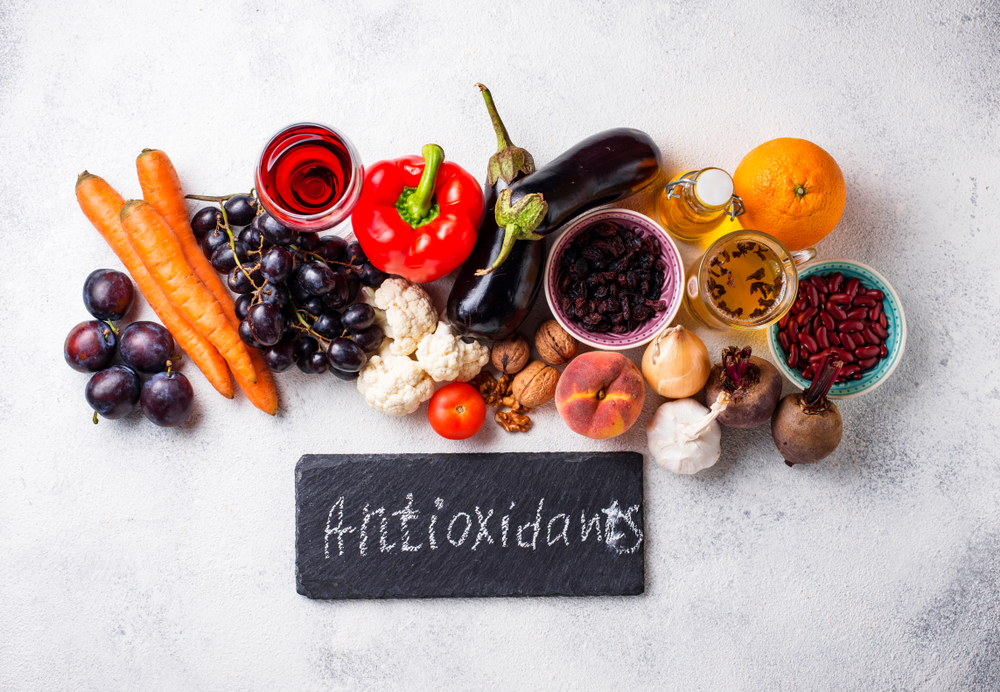Free radicals are highly unstable and reactive molecules that are literally stealing electrons from your healthy cells at this very moment, causing damage that accumulates over time and contributes to aging, disease, and cellular breakdown throughout your body. While your body naturally produces some free radicals as part of essential biological processes, modern life has created an overwhelming excess that your natural defenses can’t handle.
These molecular troublemakers don’t just cause minor cellular inconvenience, they’re linked to serious health conditions including heart disease, cancer, diabetes, and neurodegenerative diseases that can dramatically impact your quality of life and longevity. Understanding what free radicals are and how they damage your body is crucial for protecting your health.
The good news is that your body has powerful defense mechanisms against free radical damage, and you can significantly boost these defenses through strategic dietary and lifestyle choices that provide your cells with the antioxidant protection they desperately need.
Free radicals are cellular criminals stealing from your healthy cells
Free radicals are molecules with unpaired electrons, making them extremely unstable and desperate to achieve balance by any means necessary. They seek stability by bonding with or literally stealing electrons from other molecules in your body, including your DNA, proteins, and the lipids that make up your cell membranes.
This electron theft process creates a chain reaction of cellular damage that can alter the fundamental structure and function of your cells. When free radicals attack your DNA, they can cause mutations that lead to cancer. When they target proteins, they can disrupt enzyme function and cellular repair mechanisms. When they damage cell membranes, they can affect how nutrients enter and waste products exit your cells.
The structural changes caused by free radical damage result in inflammation, accelerated aging, and increased susceptibility to various diseases. Your cells are constantly under siege from these reactive molecules, and without adequate protection, the cumulative damage can become overwhelming.
What makes free radicals particularly dangerous is that each damaged molecule can become a free radical itself, creating a cascade of destruction that spreads throughout your tissues and organs if not controlled by antioxidant defenses.
Your body and environment create a perfect storm of free radicals
Free radicals assault your cells from both internal and external sources, creating a constant barrage that your antioxidant systems must work overtime to neutralize. Understanding these sources helps you realize why free radical protection is so crucial in modern life.
Internal sources include normal metabolic processes like cellular respiration, where your cells convert food into energy and naturally produce free radicals as byproducts. Your immune system also generates free radicals intentionally to kill harmful bacteria and viruses, but this protective mechanism can cause collateral damage to healthy cells.
Even beneficial activities like exercise increase free radical production because working muscles consume more oxygen and generate more metabolic waste products. While exercise provides enormous health benefits, it also creates oxidative stress that must be balanced with adequate antioxidant protection.
External sources have multiplied dramatically in the modern world, with environmental pollution, heavy metals, cigarette smoke, pesticides, and ionizing radiation all contributing to excessive free radical production. Urban living exposes you to car exhaust, industrial chemicals, and processed foods that dramatically increase your free radical burden beyond what your ancestors ever experienced.
Cardiovascular disease starts with free radical attacks on cholesterol
Free radicals play a central role in heart disease development by oxidizing LDL cholesterol, transforming it from a relatively harmless molecule into a dangerous one that promotes atherosclerosis. This oxidation process essentially turns your cholesterol into a weapon against your own cardiovascular system.
Oxidized LDL cholesterol becomes sticky and inflammatory, accumulating in your artery walls where it triggers immune responses that create plaque buildup. This plaque narrows your arteries and can eventually rupture, causing heart attacks and strokes that could have been prevented with better antioxidant protection.
The process begins years before you experience any symptoms, with free radicals silently damaging your blood vessel walls and setting the stage for cardiovascular disease. Standard cholesterol tests don’t measure oxidized LDL, so you might have seemingly normal cholesterol levels while still developing heart disease.
Antioxidants can prevent this oxidation process, essentially protecting your cholesterol from becoming harmful. This is why people with diets rich in antioxidants have lower rates of heart disease even when their total cholesterol levels aren’t dramatically different from people with higher disease rates.
Your brain becomes vulnerable to degenerative diseases through oxidative damage
Neurodegenerative diseases like Alzheimer’s and Parkinson’s are closely linked to oxidative stress that damages neurons and disrupts the cellular repair systems your brain needs to maintain optimal function. Your brain is particularly vulnerable to free radical damage because it uses enormous amounts of oxygen and has relatively few antioxidant defenses.
Brain cells that are damaged by free radicals lose their ability to communicate effectively with other neurons, leading to the cognitive decline, memory problems, and motor function issues characteristic of neurodegenerative diseases. The damage accumulates over decades, often beginning long before symptoms become apparent.
The blood-brain barrier that normally protects your brain from toxins can become compromised by oxidative stress, allowing more harmful substances to enter brain tissue and cause additional damage. This creates a vicious cycle where initial free radical damage makes your brain more vulnerable to further injury.
Research shows that people with higher antioxidant intake throughout their lives have significantly lower rates of dementia and cognitive decline, suggesting that protecting your brain from free radical damage early and consistently may be one of the most important things you can do for long-term mental health.
Skin damage and cancer result from UV-generated free radicals
Ultraviolet radiation from sun exposure creates massive amounts of free radicals in your skin cells, leading to the visible signs of aging like wrinkles, age spots, and loss of elasticity that make people look older than their chronological age. This damage occurs every time you’re exposed to UV rays, even through windows or on cloudy days.
The DNA damage caused by UV-generated free radicals is what leads to skin cancer development, including deadly melanoma that can spread throughout your body. Each episode of sun damage increases your lifetime cancer risk, and the effects are cumulative over your entire life.
Free radical damage to collagen and elastin proteins in your skin causes the structural changes that create wrinkles and sagging. These proteins provide the framework that keeps your skin firm and youthful, and once they’re damaged by oxidative stress, they’re difficult to repair or replace.
Antioxidants can provide some protection against UV-induced free radical damage, but they work best when combined with proper sun protection measures like sunscreen, protective clothing, and avoiding peak UV exposure times.
Diabetes complications multiply through oxidative stress pathways
High blood sugar levels create excessive free radical production that contributes to the serious complications associated with diabetes, including nerve damage, kidney disease, and accelerated cardiovascular disease. The oxidative stress caused by elevated glucose levels damages blood vessels throughout your body.
Diabetic complications often result from free radical damage to the small blood vessels that supply your nerves, kidneys, and eyes. This damage disrupts normal function and can lead to permanent disability if not controlled through blood sugar management and antioxidant protection.
The inflammatory responses triggered by oxidative stress in diabetes create additional free radicals, establishing a cycle of damage that can be difficult to break without comprehensive management that includes both glucose control and antioxidant support.
People with diabetes who maintain higher antioxidant levels through diet and supplements often experience fewer complications and better long-term outcomes, suggesting that oxidative stress management should be a central part of diabetes care.
Antioxidants provide your cellular defense system against free radical attacks
Antioxidants are specialized molecules that neutralize free radicals by donating electrons without becoming unstable themselves, essentially sacrificing themselves to protect your cells from damage. Your body produces some antioxidants naturally, but you must obtain others through food and supplements.
Key dietary antioxidants include vitamins A, C, and E, along with minerals like selenium and zinc that support antioxidant enzyme systems. Phytochemicals found in colorful fruits, vegetables, whole grains, and spices provide additional antioxidant protection with unique mechanisms of action.
The most effective antioxidant protection comes from consuming a variety of different antioxidant compounds rather than focusing on single nutrients. Different antioxidants work in different parts of your cells and against different types of free radicals, so diversity is crucial for comprehensive protection.
Research consistently shows that people who eat diets rich in natural antioxidants have lower rates of chronic diseases and slower aging processes compared to those with low antioxidant intake. Whole foods appear to provide better protection than isolated antioxidant supplements, possibly because of synergistic interactions between different compounds.
The key to maximizing your antioxidant protection is consuming a rainbow of colorful plant foods that provide diverse antioxidant compounds, while also maintaining healthy lifestyle habits that minimize your exposure to free radical sources.
















